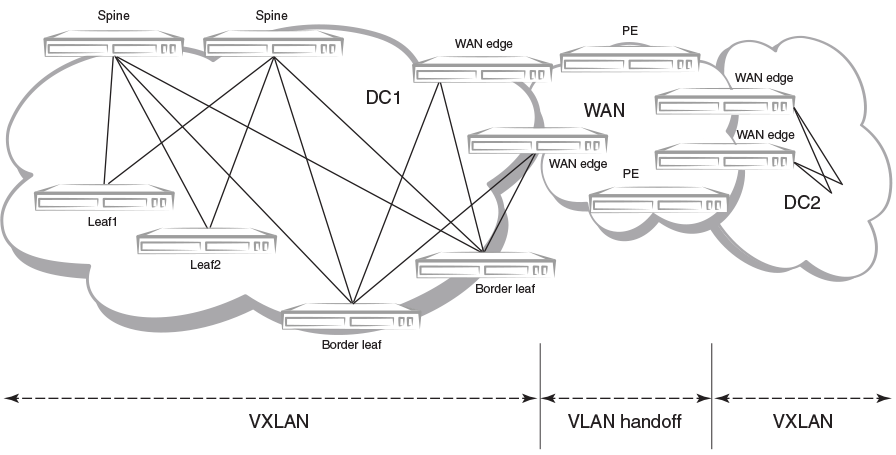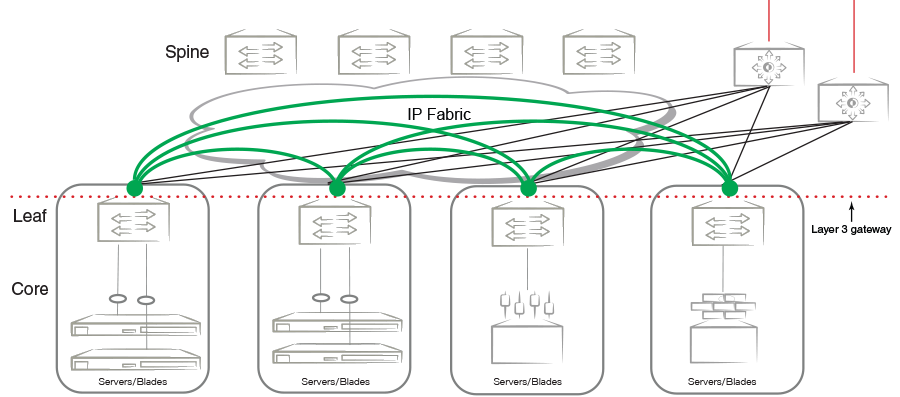BGP EVPN Overview
Ethernet VPN (EVPN) provides a standards-based solution for data center overlay and data center interconnect (DCI).
RFC 7432 (BGP MPLS-Based Ethernet VPN) specifies multiprotocol extensions to BGP to exchange Layer 2 routes in an MPLS Ethernet VPN network. These extensions are useful in DCI scenarios.
A BGP EVPN-based IP Fabric consists of BGP EVPN for VXLAN overlay networks and a broad set of Layer 2, Layer 3, and infrastructure features to enable seamless deployment, on-demand usage of forwarding entries in hardware, and minimization of flooding in the network.
IP Fabrics topologies
The following figure shows a supported topology where the SLX devices are nodes in a BGP EVPN spine in an IP Fabrics network.

The leaf nodes in the IP Fabric can be any of the supported hardware platforms. A BGP EVPN-based Multi-Chassis Trunk (MCT) solution is also supported on those platforms. However, using a co-located BGP EVPN spine and a BGP EVPN MCT on the same switch is not supported. For a list of supported platforms, see Supported Hardware.
VXLANs provide the inter-connectivity between leaf nodes in an IP Fabric network. VXLAN tunnels are established between leaf nodes. The following figure illustrates this VXLAN connectivity.


Note
Leaf nodes will be dual-homed.Supported IP Fabrics features
- BGP EVPN spine with route reflector control plane
- VXLAN VTEP discovery
- VXLAN logical VTEP
- BGP EVPN-based MCT cluster formation
- Layer 2 (MAC) route exchange
- ARP/ND (MACIP) route exchange
- Static anycast gateway
- ARP suppression
- IP unnumbered interfaces
- Multi-VRF support and EVPN prefix route exchange
- Conversion of MACIP routes to host prefix routes
BGP EVPN use cases
- BGP EVPN VXLAN overlay in the data center
- MCT cluster formation
- VXLAN data-center interconnect (Layer 2 services on the SLX 9540 only)
